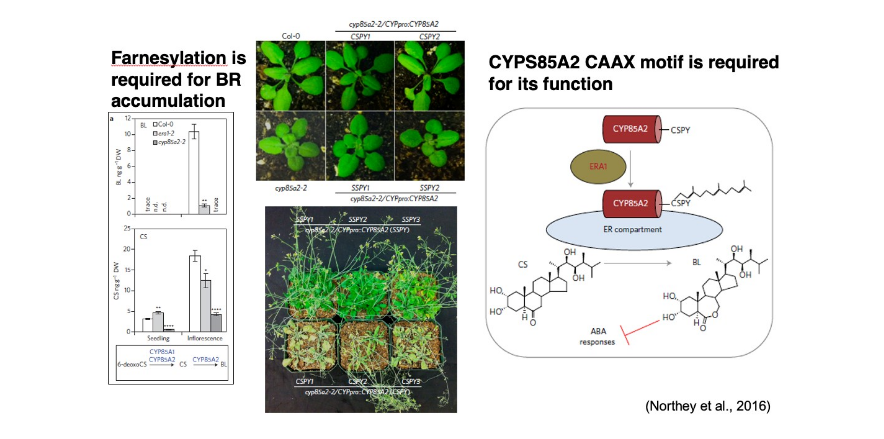Jun 16, 2023
Molecular mechanisms behind Farnesylation-mediated drought response in Brassicaceae
Although farnesylation (lipid modification of proteins) has well defined roles in animals and yeast, its roles in higher plants are still relatively rudimentary. Farnesylation was shown to be a negative regulator of abscisic acid (ABA) responses, but its protein targets had remained unclear for the past 20 years. There are over 700 potentially farnesylated proteins in Arabidopsis alone, which makes identification of a specific target for a pathway extremely difficult. We used a combined bioinformatics, functional genomics, biochemical and cell biological approach to identify a farnesylated p450 enzyme (CYP85A2) in the Arabidopsis genome that plays a major role in ABA sensitivity. CYP85A2 catalyzes the final and rate-limiting step in the brassinosteroid (BR) hormone biosynthetic pathway (conversion of castasterone to brassinolide) in Eudicot plants. Thus, this study mechanistically linked BR synthesis to ABA sensitivity. A major consequence of modifying farnesylation in plants is improved drought tolerance; we showed that lack of CYP85A2 or its farnesylation rendered the plants extremely drought tolerant. Current projects continue to exploit the antagonistic role of BR and ABA via gene-editing or mutagenesis-induced changes in crops to enhance drought tolerance to create sustainable, climate-resilient crops for the future. We have now partnered with Frontier Agriscience inc., Nutrien Ltd. and AgGene inc. through NSERC-SPG, NSERC-CRD, Genome Alberta, Alberta Innovates and ADF grants to transfer this technology into crops such as canola, wheat and field pea.
For more information on this, please refer to

